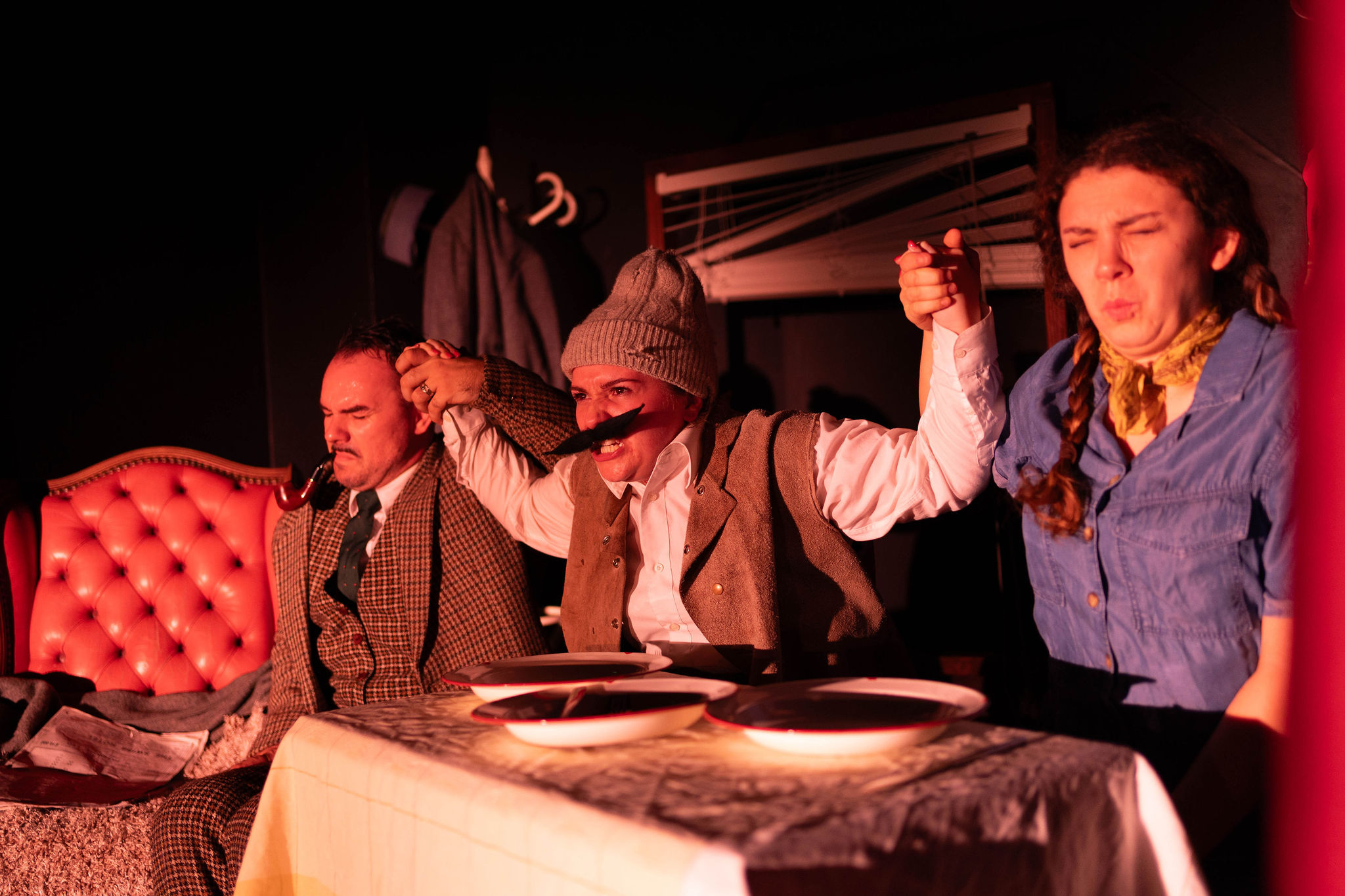Tucked away on the corner of Parramatta Road and Glebe Point Road, this little gem seems to be a secret even the locals don’t know about, unless you’re out and about at night when it transforms into a devilish spectacle. It is located between cafes that I have walked past hundreds of times, and yet like the wardrobe of Narnia it only seemed to appear when I needed it.
The Wildfire Lounge is generally only a bar, which uses their stage area for their weekly comedy nights and was dubbed by a staff member as a “den of iniquity”. Everyone who worked there seemed to have a British accent, and none of them sounded legitimate. Stiff drinks were strongly encouraged, and we were led to a semi-theatrical space that featured the smallest professional stage I have ever seen and a dozen circular tables and chairs that were more reminiscent of a cabaret than a theatre. The jazz music, dim lighting and red curtains did nothing to alleviate this effect.
It felt like stepping back into a 1920s speakeasy — their upcoming Gatsby Burlesque Show will certainly take advantage of this atmosphere. At the beginning of the show, the probably-not Englishman declared that we should all have a drink as it had been a very long week: “It’s only Tuesday, but fuck.”
Staged by Blinking Light Theatre and directed by Danny Akbar, The 39 Steps is a play set in mid-1930s Britain based on the classic Hollywood noir by Alfred Hitchcock. It features the protagonist Richard Hannay (David Halgren) who leaves behind a glitzy & glamorous lifestyle in London for the Scottish moors, where he becomes entangled in crime and espionage. However, the tone of the play is extremely comical.
Hannay is suddenly whirled away into a complex criminal plot, which sets off when Annabella Schmidt (Izabella Louk) gasps that he’s the only person who could stop a spy ring from escaping with state secrets about the British Air Force, before dying dramatically in his arms. Hannay seemed to get involved with every woman he came across, most of whom were characters played by Louk. The central plot point is Schmidt’s death and Hannay being subsequently framed for her murder, which led to him seeking refuge in all sorts of places, trying to clear his name.
The greatest strength of the play lay in the dexterity of its four actors — two of whom played dozens of distinct characters between them. Halgren played Hannay throughout the show, whose trademark was his perpetually red face and the sweat that ran down his face — whether it was a result of the exertion of acting for two hours or the English winter that he was dressed for, who can say? Louk switched between several female characters, and doubled as producer of the show. Contrasting the comedic prowess of her peers, Louk showed a flair for melodrama that suited her well playing roles as a spy, traitor and lover, although she was remarkably haughty as all three.
Ellen Coote and Sophie Douglas ostensibly played Clown 1 and Clown 2, because if the program had tried to list all their characters there wouldn’t be room for anything else. Coote and Douglas had an amazing range, which included shepherds, train conductors, policemen, milkmen, criminal masterminds and grumpy Scottish bagpipe players. Douglas was rather tall and towered over the very short Coote in a way that was comic before they opened their mouths. They were an inimitable duo, who seemed effortlessly funny – aided by their penchant for false moustaches. In one scene the two actors switched characters, costumes and accents about four times each in the space of a minute, purely by donning and shedding hats and coats.
Another highlight of the play was how it took advantage of every inch of the stage, which Louk called “barely bigger than a dining table”. I hadn’t realised, sitting down, that I was sitting on the stage. But it soon became clear that no square inch of the room would go unused – actors came in from the front, back and sides, weaving through tables, talking to audience members, sitting on the chairs and pretending to pour milk in our glasses. The audience became the fifth actor which participated in magic shows, conferences, and as herds of sheep. Radhika Lal as the stage manager and Emilia Higgs as movement manager did a marvellous job in ensuring that every inch of the space was used; anywhere in the building was up for grabs. At times they created a car, a train and even a man being chased by an airplane. Thus, a tiny theatrical space felt much larger during the performance, and the actors managed to make anything feel real.
One of the unexpected bonuses of the play was its commitment to sustainability. Nearly everything, barring the moustaches, a few screws and a couple of costume pieces, was from secondhand sources. Everything that was purchased for the play was bought from sustainable businesses, and after the play the items were rehomed or recycled. Blinking Light Theatre stated that “we found ourselves dumpster diving for second-hand wood, scouring council clean-ups, repurposing old maps [and] taking the wheels off other things.”
It was a comfort and a joy to watch such stunning theatre made by local performers in local venues. These sustainable practices, as the production observed, “opens up a world of creative potential, and is imperative if we want to future-proof this art form.” So the Blinking Light Theatre did not let the tiny space or secondhand resources prevent it from revolutionising the theatrical sphere.





